Things to Do: Events, Experiences and Much More…
Discover what to do in Barcelona!
Choose from hundreds of activities and buy your tickets with discounts and beat the queues!
Enjoy your stay in Barcelona!

Things to Do: Events, Experiences and Much More…
Discover what to do in Barcelona!
Choose from hundreds of activities and buy your tickets with discounts and beat the queues!
Enjoy your stay in Barcelona!

Barcelona, a city renowned for its breathtaking architecture and vibrant culture, is home to numerous iconic landmarks.
Among them stands the magnificent Arc de Triomf, a captivating monument that pays homage to the city’s history and triumphs.
With its grandeur, artistic details, and prominent location, the Arc de Triomf stands as a testament to Barcelona’s rich heritage and serves as a beloved symbol of civic pride.
The Arc de Triomf of Barcelona, located at the head of the grand boulevard of Passeig de Lluís Companys, was constructed as the main entrance to the 1888 Universal Exposition held in the city.
Designed by architect Josep Vilaseca i Casanovas, the arch was envisioned to symbolize Barcelona’s warm welcome to visitors from around the world.
Its construction took over a year and was completed in 1888, marking a significant milestone for the city.
The Arc de Triomf exhibits a striking blend of architectural styles, primarily influenced by the Moorish Revival and Neo-Mudéjar movements.
The arch’s brick façade, adorned with ornate ceramic details, features intricate sculptures and decorative motifs that add depth and charm to the structure.
The archway itself stands at an impressive height of 30 meters (98 feet), showcasing a captivating interplay of red and white hues.
Beyond its architectural splendor, the Arc de Triomf carries great symbolic meaning. The monument symbolizes the triumphs of Barcelona and Catalonia, as well as the progress achieved through the Universal Exposition.
Its ornamental friezes depict allegorical figures, representing industry, agriculture, and commerce, all of which were vital to the region’s growth during the late 19th century.
Situated at the entrance of Parc de la Ciutadella, the Arc de Triomf acts as a gateway to one of Barcelona’s most beautiful green spaces.
The surrounding area is bustling with activity, attracting locals and tourists alike. Visitors can often be seen strolling along the promenade, enjoying the scenic views, or engaging in leisurely picnics beneath the arch’s elegant shadow.
The Arc de Triomf serves as a central meeting point and a venue for cultural events and festivities. It has become an integral part of Barcelona’s social fabric and frequently hosts concerts, street performances, and celebrations.
The arch’s expansive plaza provides ample space for people to gather, fostering a sense of community and conviviality.
The Arc de Triomf’s undeniable charm and historical significance draw countless visitors each year. Its prominent location, adjacent to popular attractions like the Parc de la Ciutadella and the Barcelona Zoo, ensures a steady stream of admirers exploring the area.
Tourists and locals alike are captivated by the arch’s beauty, often pausing to marvel at its intricate details or capture its grandeur through photography.
The Arc de Triomf stands as a testament to Barcelona’s enduring cultural heritage. While the monument has witnessed the passing of time and numerous societal changes, it remains a cherished emblem of the city’s vibrant identity.
The ongoing preservation efforts undertaken by local authorities ensure that future generations will continue to appreciate and be inspired by this architectural masterpiece.
As an architectural marvel and a symbol of Barcelona’s triumphs, the Arc de Triomf is a must-see landmark that embodies the city’s rich history and cultural heritage.
Its stunning design, vibrant location, and significant historical context make it a beloved attraction, capturing the hearts of all who encounter it.
Introduction
Nestled in the vibrant city of Barcelona, Spain, Casa Batlló stands as a testament to the extraordinary artistic genius of renowned architect Antoni Gaudí.
This remarkable building, located on the iconic Passeig de Gràcia, is a magnificent example of Gaudí’s distinctive architectural style and innovative design.
Casa Batlló’s whimsical façade, imaginative interior, and rich symbolism have made it a beloved landmark and a must-visit destination for art and architecture enthusiasts from around the world.
A Living Artwork
Completed in 1906, Casa Batlló is a true work of art that transcends the boundaries of traditional architecture. Gaudí was commissioned to renovate the existing building, and he transformed it into an extraordinary masterpiece.
The building’s façade is an explosion of color and organic shapes, characterized by its undulating lines, mosaic tiles, and exquisite ironwork. Gaudí drew inspiration from nature, incorporating marine motifs and bone-like structures, creating a harmonious fusion of art and architecture.
The Enigmatic Façade
Casa Batlló’s façade is a prime example of Gaudí’s imaginative approach to design. The irregular balconies, resembling masks or skulls, are adorned with colorful mosaic tiles, reminiscent of fish scales.
The ornate wrought ironwork balconies twist and turn, resembling seaweed floating in the ocean. The vibrant hues of blue, green, and gold add a sense of vitality and playfulness to the building, capturing the imagination of all who behold it.
The Interior Wonderland
Step inside Casa Batlló, and you will be transported into a world of enchantment and creativity. Gaudí’s attention to detail is evident in every aspect of the interior. The soaring central staircase, designed to resemble the spine of a mystical creature, guides visitors through the various levels of the house.
The skylights, shaped like tortoise shells, allow natural light to flood the rooms, creating an ethereal ambiance.
The interior spaces of Casa Batlló are characterized by curved walls, mosaic tiles, and intricate woodwork. Gaudí’s use of color, light, and unconventional forms creates a dynamic and immersive experience.
The Noble Floor, with its grand rooms and ornate details, showcases the opulence of the Batlló family’s former residence. The attic, with its whimsical arches and skeletal structures, offers a glimpse into Gaudí’s architectural process and serves as an exhibition space.
Symbolism and Nature-inspired Elements
Gaudí infused Casa Batlló with profound symbolism and nature-inspired elements. The building’s unique design is said to represent the legend of Saint George slaying the dragon.
The scaled roof tiles resemble the dragon’s back, while the cross atop the building symbolizes the saint’s triumph. The interior features intricate motifs inspired by aquatic life, with columns resembling coral and ceilings reminiscent of an underwater world.
Gaudí’s use of light and color further enhances the organic feel of the space, evoking a sense of harmony and connection with nature.
Preservation and Recognition
Casa Batlló has undergone extensive restoration over the years to preserve its architectural integrity. The building has been recognized as a UNESCO World Heritage site and serves as a testament to Gaudí’s visionary approach to architecture.
Today, Casa Batlló is open to the public, offering guided tours that allow visitors to immerse themselves in the captivating world created by Gaudí.
Conclusion
Casa Batlló stands as a vibrant and imaginative expression of Antoni Gaudí’s artistic brilliance. Its striking façade, enchanting interior, and symbolic design elements continue to captivate and inspire visitors, inviting them to marvel at the boundless creativity and innovation of Gaudí’s vision.
Casa Batlló is not merely a building but a living artwork, a testament to the power of architecture to transcend the conventional and ignite the imagination.
As one explores the intricate details and ingenious design elements of Casa Batlló, it becomes evident that Gaudí’s genius knew no bounds.
The building stands as a testament to his ability to merge aesthetics, functionality, and symbolism, creating an immersive experience that resonates with visitors on a profound level.
Casa Batlló is a true gem in Barcelona’s architectural landscape, embodying the spirit of Catalan Modernism and leaving an indelible mark on the world of art and design.
It serves as a reminder of Gaudí’s enduring legacy and his unwavering commitment to pushing the boundaries of architectural possibilities.
Visiting Casa Batlló is a journey into a realm of imagination, where architecture becomes art and every detail tells a story.
It is a testament to the transformative power of creativity and the profound impact it can have on our perception of the world around us.
In the heart of Barcelona, Casa Batlló stands as a vibrant testament to Gaudí’s innovative spirit and his ability to create spaces that transcend the ordinary. It invites us to step into a world of wonder and enchantment, where art and architecture merge seamlessly, leaving an indelible mark on all who have the privilege of experiencing its magic.
Barcelona, a city located on the northeastern coast of Spain, is a popular tourist destination known for its stunning architecture, rich history, and vibrant culture. It’s a city that caters to a wide range of interests and is a perfect destination for both solo travelers and families. In this article, we’ll explore some of the best things to do and see in Barcelona for tourists.
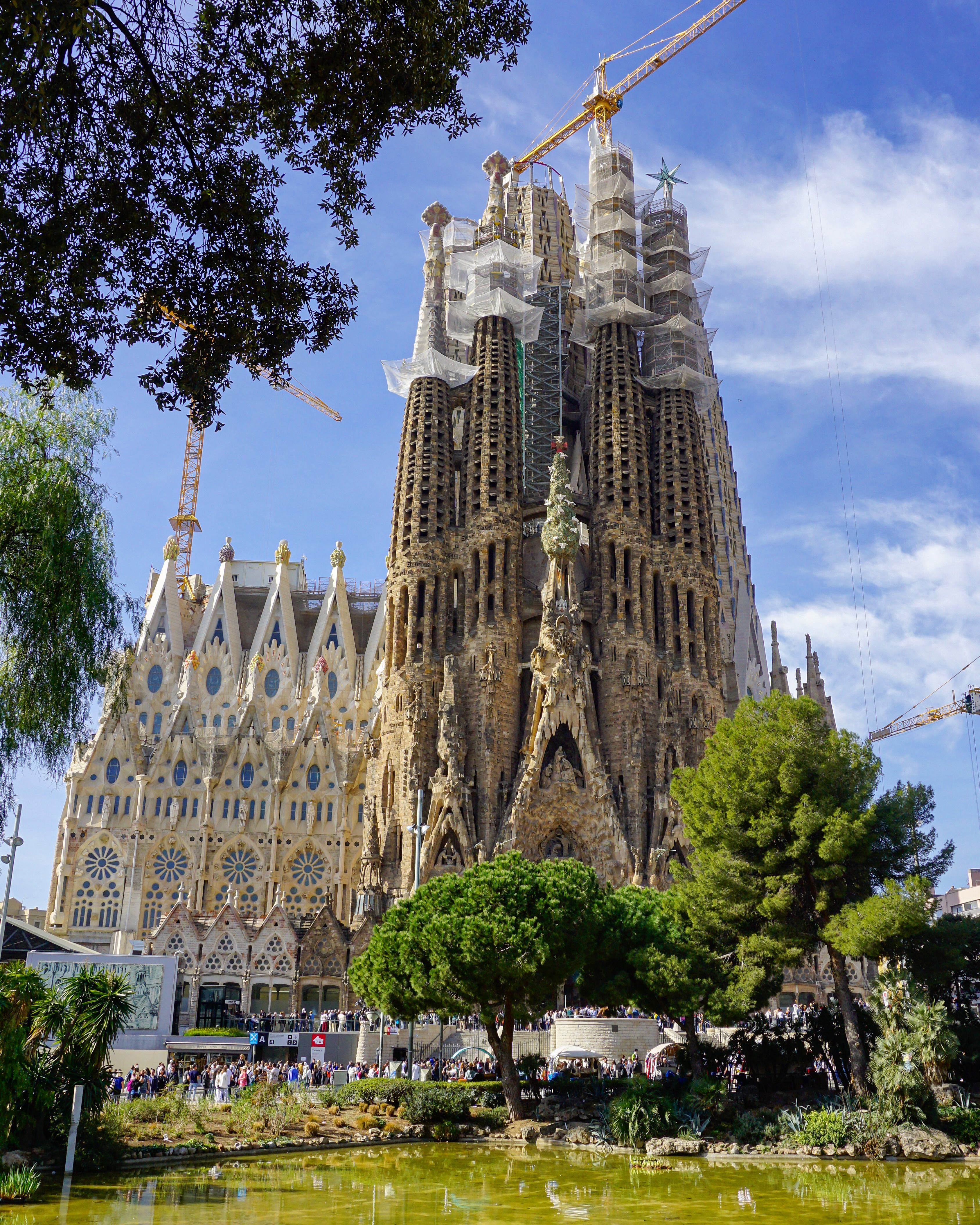
La Sagrada Familia is one of the most famous landmarks in Barcelona, and it’s a must-visit for any tourist. This awe-inspiring basilica was designed by the legendary architect Antoni Gaudi, and it’s still under construction after more than a century of work. The basilica’s unique design and stunning stained glass windows make it a truly unforgettable experience. Visitors can take a guided tour or simply explore on their own.

Another Gaudi masterpiece, Park Guell is a whimsical park filled with colorful mosaics, sculptures, and winding paths. The park’s iconic terrace is a great spot to take in the panoramic views of the city, and visitors can also explore the Gaudi House Museum located on the property.
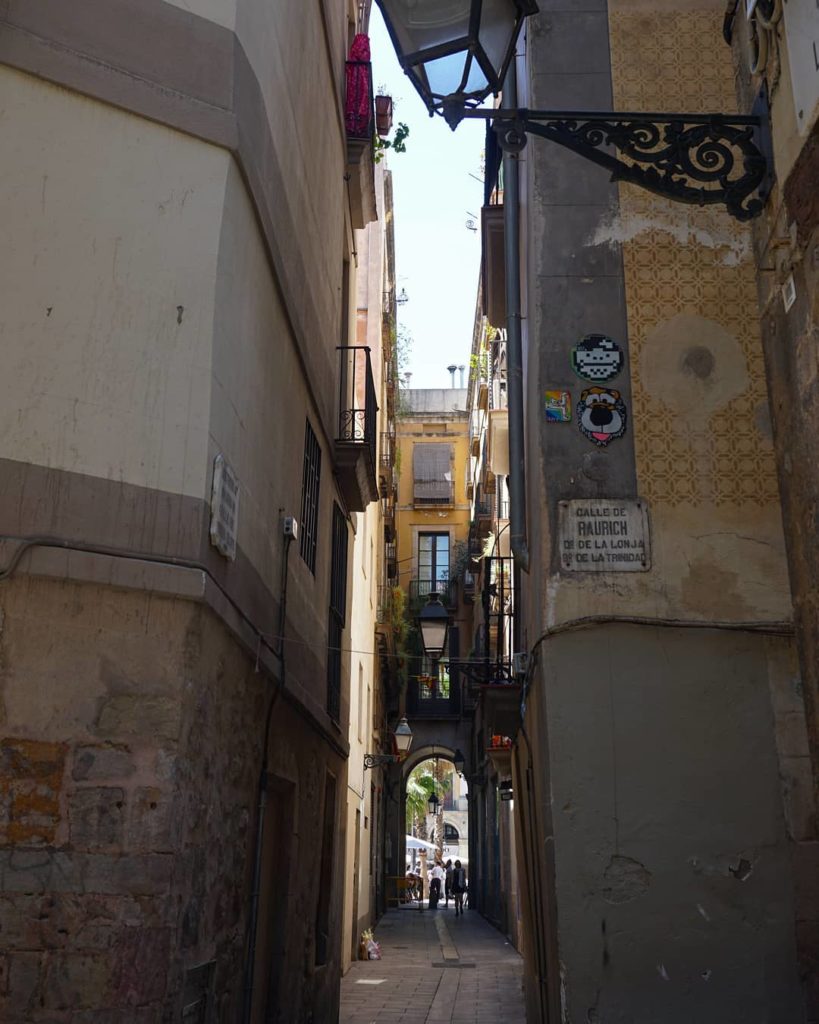
Barcelona’s Gothic Quarter is a must-visit for anyone interested in history or architecture. This medieval neighborhood is filled with narrow cobblestone streets, charming cafes, and stunning Gothic architecture. Visitors can explore the neighborhood’s many plazas and landmarks, including the Barcelona Cathedral, Placa Reial, and the Roman walls.

Barcelona is home to several beaches, and they’re a great place to relax and soak up the sun. Barceloneta Beach is the most famous and is always bustling with activity, while Mar Bella Beach is a bit more secluded and popular among locals.
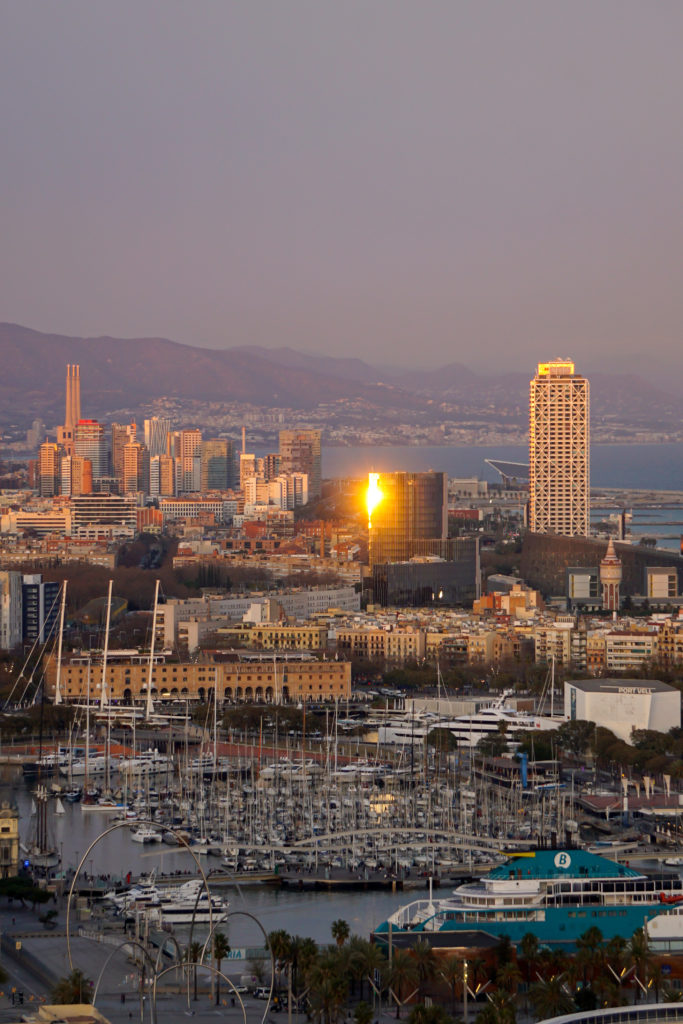
Montjuic Castle is a hilltop fortress that offers stunning views of the city and the Mediterranean Sea. Visitors can explore the castle’s historic halls and exhibits or simply enjoy a leisurely stroll through the surrounding gardens.
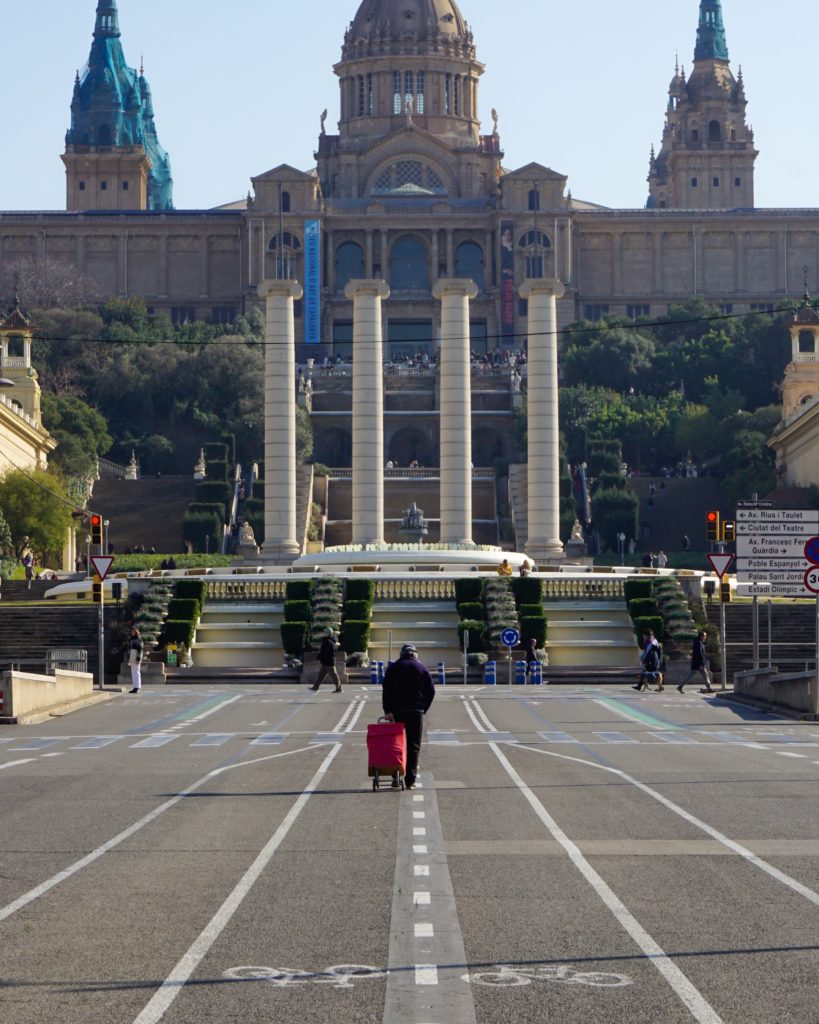
Barcelona is home to many world-class museums, including the Picasso Museum, the Joan Miro Foundation, and the National Art Museum of Catalonia. These museums offer a wide range of exhibits and programs that cater to all ages and interests.
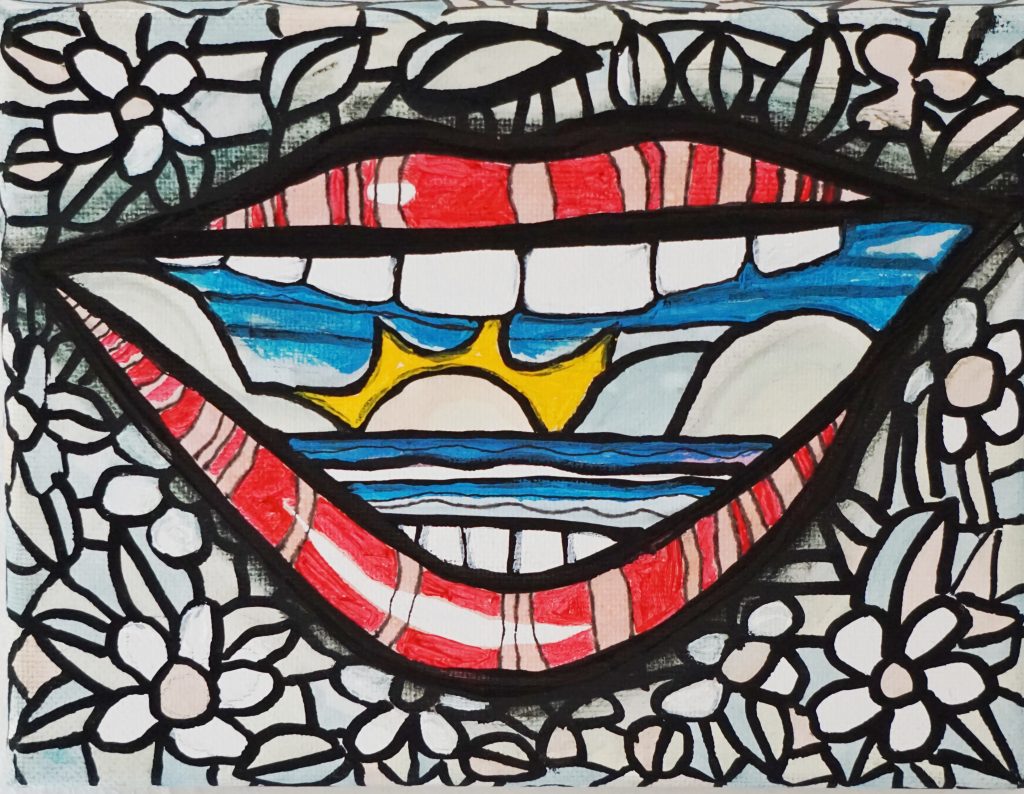
Barcelona is known for its delicious food and drink, and visitors should take the opportunity to sample some of the city’s famous dishes. Traditional Catalan dishes include paella, fideua, and botifarra sausage, while the city’s many cafes and bars offer a range of coffee, wine, and cocktails.
Barcelona is a city that truly has something for everyone, and tourists should take the opportunity to explore its many sights and experiences. From stunning architecture and historic landmarks to delicious food and drink, Barcelona is a destination that’s sure to leave a lasting impression.
Gustavo Vega is without a doubt, one of the most outstanding representatives of the creative technique called visual poetry. It is no secret that he is one of the most unique poets of the current literary panorama.

For many visual artists he is an author of reference for his investigation on Visual Poetry as well as on his own creative work.
Visual poetry is a manifestation which uses all the resources for expression. For example it mixes words with plastic elements. When there are some poems with no words, it’s because they have no need for them…
If we had to investigate the origins of Visual Poetry, this undertaking would not only lead us to an era of ancient Greece, to the times of Theocritus, and other creators of Hellenic period, but also to the Pre-Socrates philosophy and the history of thought itself. Or we can go even thousands of years further back in time to the primitive expressions of pictographics. 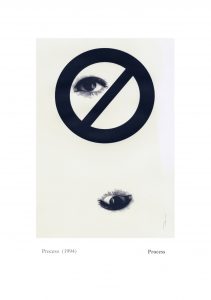
Warm, ironic, transcendental or banal, the universe of Gustavo Vega is filled with magical stars and mysterious black holes as well as gods and goddesses. In liberating the rigidness of academic language through breaking, pulling and isolating, he dislocates the verb in order to make a verse. The page, the word, the typography, the image and the emptiness orchestrate, reconfigure a new language. These experiments of visual poems are the result of investigations that Gustavo Vega has developed with info graphic technics and more traditional methods.
Sharing this post you help us share the joy of art and independent creativity.
Generally speaking, Barcelona is a safe city to visit, but unfortunately it is the pickpocket capital of the world. Sophisticated and hi-tech pickpockets roam around the streets especially in the city center. Here is a collection of important tips how to avoid and outsmart pickpockets during your stay.
Unfortunately, too many arriving visitors get pickpocketed before they even reach to their hotel rooms. The train, bus and metro stations and the entrances to hotels are hot spots for pickpockets and thieves. Pickpockets love arriving tourists, because they carry all their valuable belongings with them. In a new place, just arriving tourists are usually exposed, tired, confused and a bit disoriented.
Newcomers are marked in front of the ticket sales offices and machines. As you pay for your transport, pickpockets are observing where you keep your purse or wallet.
When you arrive, the best way to avoid pickpockets is to book in advance a transfer to your hotel. Also remember to keep your transport tickets and money in separate places. And don’t forget to take out travel insurance.
Tip: “To avoid unnecessary attention, remove your luggage tag after landing.”
When you have arrived safely into your hotel room, it’s time to plan some precautionary safety preparations.
Before you go out, leave all your valuables in your hotel room. For example, your laptop is much safer in your room than inside your bag-bag on the streets. Don’t leave your camera or tablet in plain view. Hide your valuable belongings out of sight. If you want more safety, lock your stuff inside the safety box or behind the hotels front desk.
Separate your money. Always make sure to keep your money at least in two different places. If you use more than one credit card, leave the others inside your room. In case your credit card gets stolen or lost, keep a copy of the overseas emergency number of your bank.
If you are planning a “Wild Night” in Barcelona, a great tip is to emulate the dress code of local people. Standing as a tourist out from the crowd, you are an easier prey for the thieves.
Tip: “Spanish law requires you to carry an ID. But a photocopy of your passport or ID card is usually enough.”
Pickpockets hang around in crowded places. They pick up their victims in bars, restaurants, shopping streets and escalators.
When you enter in a crowded place, hold your one hand on top of your bag and protect your mobile phone or wallet with your other hand. The safest place for your bag is against your chest.
Do not give money to beggars. If you do, keep some small change in a separate pocket or purse so that the thieves can’t detect where you hide your real money.
When you sit at the terrace, keep your bag always in front of you or on your lap. If you leave your bag on the ground keep it between your feet or attached in your body. And, when you pay the bill, don’t count your money in front of everybody.
Watch out for distraction and avoid theft scams. Thieves start their scams with a distraction. Sometimes they surprise you asking for directions. Some of them may drop money or a valuable looking item in front of you. Sometimes they ask for a donation to a charity. The only thing what these scoundrels really want is to find out where you hide your money. It’s a bitter irony that the person who distracted the victim often stays to pretend to help them to find the missing item, although they were the one who helped to take it.
Tip: “Only carry the money you really need for the day.”
ATM – Danger Zone
If you have to withdraw money, try to avoid street side ATM’s. It is easy to find an ATM located inside a bank. Before you tip your pin code, check out that no one is lurking behind your shoulders. Remember always to cover your pin number with your hands.
Precautionary Tip: “Set a limit for your card withdraws.”
If you really wish to keep your money and belongings safe, don’t use too much alcohol and other mind-numbing drugs. The abuse of alcohol and recreational drugs diminishes your ability to absorb the stimuli from the world around you. During the night, drunken tourists are the first targets of Barcelona’s notorious pickpockets and small-time thieves. You can always find long queues at Barcelona’s police stations where confused and wasted tourists try to fill out a declaration form of lost or stolen belongings.
“If you decide to celebrate without limits, try to avoid street dealers and prostitutes!”
Brothels are illegal in Barcelona since 1956, but the majority of brothels are loosely disguised as “whiskerías” or “clubs”. After the sunset, street prostitutes and dealers come out to offer their services. Most street prostitutes are inoffensive, but others are really pushy… They come close to your skin trying to find your money by touching your “valuable parts”. Sometimes they roam in groups and it is easy to get surrounded and robbed.
The drug dealers on the street corners are shady characters. For your own safety, do not get in contact with them.
Tip: ”Avoid street prostitutes! There are many safe semi-legal clubs specialized in all kinds of sexual pleasure in Barcelona.”
Finally, if you lose your wallet, purse or bag, keep calm and a level head. Although you are pissed, please do not get angry. It just makes things more complicated.
It is better to act immediately. Find out and write a list of what was stolen. Go to the nearest police station and file a police report. You need it if you want to get back some refund from your insurance company. In the main police stations they give necessary phone numbers if needed and a telephone to make a call to your credit card agency.
If you lost your passport or ID card contact your airline in order to find out whether they will require a temporary passport for your return flight.
Locations of Police Stations in Barcelona
Main Police Station:
Comisaria de Policia de Barcelona (Ciutat Vella)
Carrer Nou de la Rambla, 76-80
08001
Barcelona, Spain
Metro Police Station:
The police station for the passengers is located within the Plaza Catalunya metro station.
Barcelona, a city renowned for its vibrant culture, stunning architecture, and lively atmosphere, is home to numerous iconic landmarks that captivate visitors from around the world.
Among these treasures lies the magnificent Plaça d’Espanya and its enchanting neighbor, the Magic Fountain.
Steeped in history, these attractions offer a mesmerizing blend of grandeur, beauty, and entertainment that leaves an indelible impression on all who encounter them.
Let’s embark on a journey to discover the allure of Plaça d’Espanya and the magic that emanates from its captivating fountain.
Located at the foot of the Montjuïc Hill, Plaça d’Espanya stands as one of Barcelona’s most iconic squares.
This expansive public space was built for the 1929 International Exhibition, a significant event that showcased the city’s architectural prowess and innovation.
Today, it continues to be a focal point for locals and tourists alike.
Plaça d’Espanya boasts remarkable architectural marvels that reflect the city’s rich history. At the center of the square, the towering Venetian Towers stand as majestic gatekeepers, welcoming visitors into this grand space.
These ornate brick and stone structures provide a sense of grandeur and serve as a reminder of Barcelona’s past.
Another prominent feature is the impressive Palau Nacional, also known as the National Palace.
This imposing building, with its distinctive blend of Renaissance and Spanish Baroque styles, now houses the Museu Nacional d’Art de Catalunya (MNAC).
Art enthusiasts will find themselves enthralled by the museum’s extensive collection of Catalan art spanning various periods.
Beyond its architectural wonders, Plaça d’Espanya offers an array of shopping opportunities and entertainment options.
Adjacent to the square, the Arenas de Barcelona, a former bullring transformed into a shopping center, beckons visitors with its vibrant selection of shops, restaurants, and cinemas.
Ascend to the rooftop for a breathtaking panoramic view of the city, including the Magic Fountain and Montjuïc.
Just a stone’s throw away from Plaça d’Espanya lies the awe-inspiring Magic Fountain, an extraordinary sight that has been enthralling audiences since its inauguration in 1929.
This magnificent fountain, designed by Carles Buigas, combines water, music, and light to create an unforgettable spectacle.
The Magic Fountain mesmerizes spectators with its synchronized water and light displays set to a carefully curated musical repertoire.
As dusk descends upon Barcelona, the fountain comes to life, transforming into a symphony of colors, shapes, and patterns that dance harmoniously to the melodies.
Each performance is a masterful production, captivating the audience and evoking a sense of wonder and joy.
The Magic Fountain is a year-round attraction, with shows taking place several times a week. However, during the summer months, the frequency of performances increases, offering even more opportunities to witness this enchanting spectacle.
It is advisable to check the schedule in advance to plan your visit accordingly and ensure a front-row seat to this mesmerizing experience.
In the heart of Barcelona, Plaça d’Espanya and the neighboring Magic Fountain beckon visitors with their awe-inspiring beauty and captivating displays.
Whether you find yourself strolling through the grand square, admiring its architectural splendor, or witnessing the magical performance of the fountain, these iconic landmarks offer an unforgettable experience that truly embodies the spirit of Barcelona.
Plaça d’Espanya and the Magic Fountain are not merely tourist attractions but also integral parts of the city’s cultural fabric.
They provide a space for locals and visitors to come together, celebrate, and revel in the beauty that surrounds them.
From leisurely walks along the square to immersive musical performances at the fountain, there is something for everyone to enjoy.
Whether you’re an architecture enthusiast, an art lover, or simply seeking a moment of wonder and awe, a visit to Plaça d’Espanya and the Magic Fountain is an absolute must.
It is an opportunity to witness the harmonious blending of history, art, and spectacle that has made Barcelona a global treasure.
As you stand amidst the grandeur of Plaça d’Espanya, surrounded by the magnificent architecture and the bustling energy of the city, and witness the Magic Fountain come to life, you will be transported to a realm where imagination knows no bounds.
It is a place where dreams take shape, and the ordinary is transformed into the extraordinary.
So, the next time you find yourself in Barcelona, be sure to carve out time to explore Plaça d’Espanya and experience the mesmerizing allure of the Magic Fountain.
The Sagrada Familia, located in the heart of Barcelona, Spain, is an architectural marvel that captivates the imagination of millions of visitors every year.
Designed by the visionary architect Antoni Gaudí, this extraordinary basilica stands as an awe-inspiring testament to human creativity and ingenuity.
Although it remains incomplete, the Sagrada Familia is already hailed as one of the world’s most iconic and extraordinary structures, attracting admiration from art enthusiasts, architects, and tourists alike.
Antoni Gaudí, the mastermind behind the Sagrada Familia, dedicated the final years of his life to this monumental project.
Construction began in 1882, and Gaudí transformed the project into his life’s work, pouring his heart and soul into its design. Gaudí’s architectural style is characterized by a fusion of Gothic, Art Nouveau, and organic forms, creating a unique and unmistakable aesthetic.
His intricate attention to detail, organic motifs, and innovative structural solutions set him apart as a visionary architect of his time.
The construction of the Sagrada Familia has been ongoing for over a century, and it continues to this day. Gaudí’s initial design called for an ambitious combination of three facades representing the birth, passion, and glory of Jesus Christ, along with eighteen towers.
Although Gaudí passed away in 1926, his vision lives on through the generations of architects, sculptors, and craftsmen who have worked tirelessly to bring his dream to fruition.
The ongoing construction serves as a testament to the commitment and dedication of countless individuals to realize Gaudí’s vision.
The Sagrada Familia is an architectural marvel that combines symbolism, religious motifs, and technological innovation.
The basilica’s facades are adorned with intricate sculptures and intricate details, each telling a story from the Bible. The Nativity Façade, the first completed section, is a celebration of life and birth, while the Passion Façade portrays the suffering and death of Jesus.
The Glory Façade, currently under construction, will depict the resurrection and the eternal glory of Christ.
The interior of the basilica is equally stunning. Visitors are greeted with an ethereal space filled with a kaleidoscope of natural light filtering through the stained glass windows.
Gaudí’s innovative use of light, along with the towering columns reminiscent of tree trunks, creates a spiritual ambiance that elicits a sense of wonder and awe.
Gaudí was not only an artistic genius but also an innovator in architectural engineering. He incorporated groundbreaking techniques to bring his vision to life.
One such innovation is the hyperboloid structure of the columns, which ensures maximum weight distribution while minimizing the number of support columns required.
Gaudí’s pioneering use of parabolic arches and catenary structures also adds to the structural stability and grandeur of the basilica.
The construction of the Sagrada Familia is estimated to be completed by 2028, marking the centenary of Gaudí’s death. However, this grand finale does not signal the end of the basilica’s journey.
The Sagrada Familia has always been intended as a living monument, adapting to the evolving architectural techniques and artistic styles of future generations.
Even after completion, the basilica will continue to be a work in progress, with ongoing restoration, maintenance, and potential additions.
The Sagrada Familia stands as an enduring symbol of human ambition, devotion, and artistic brilliance.
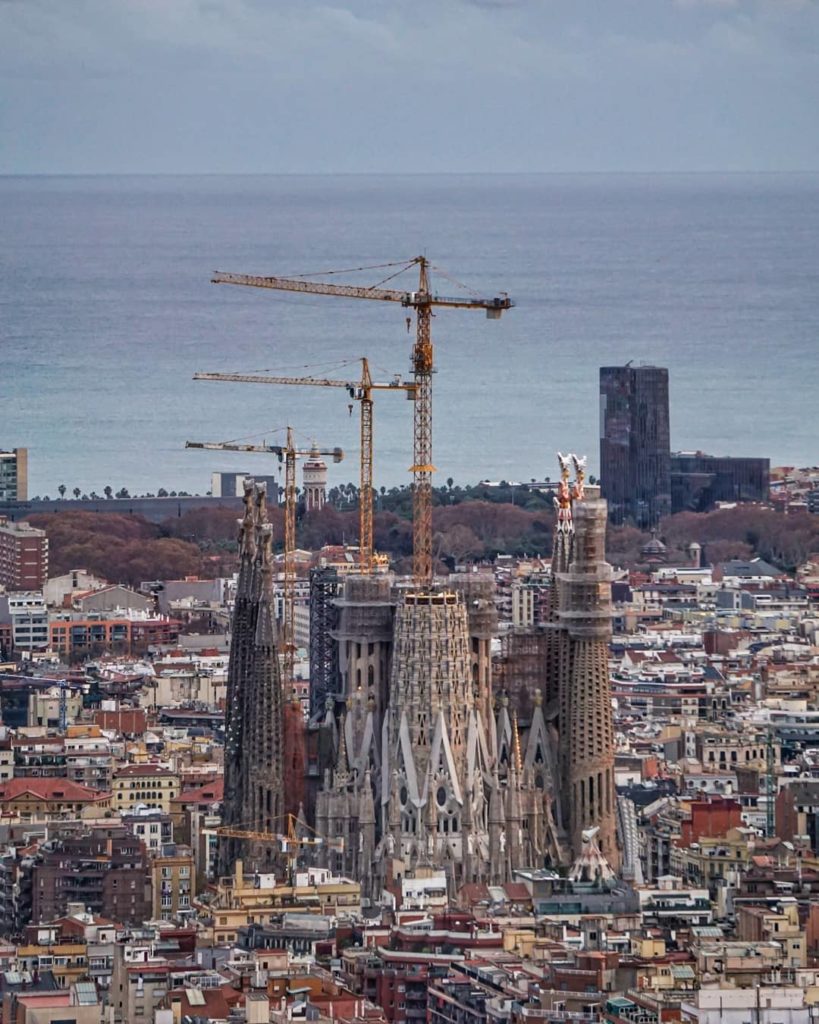
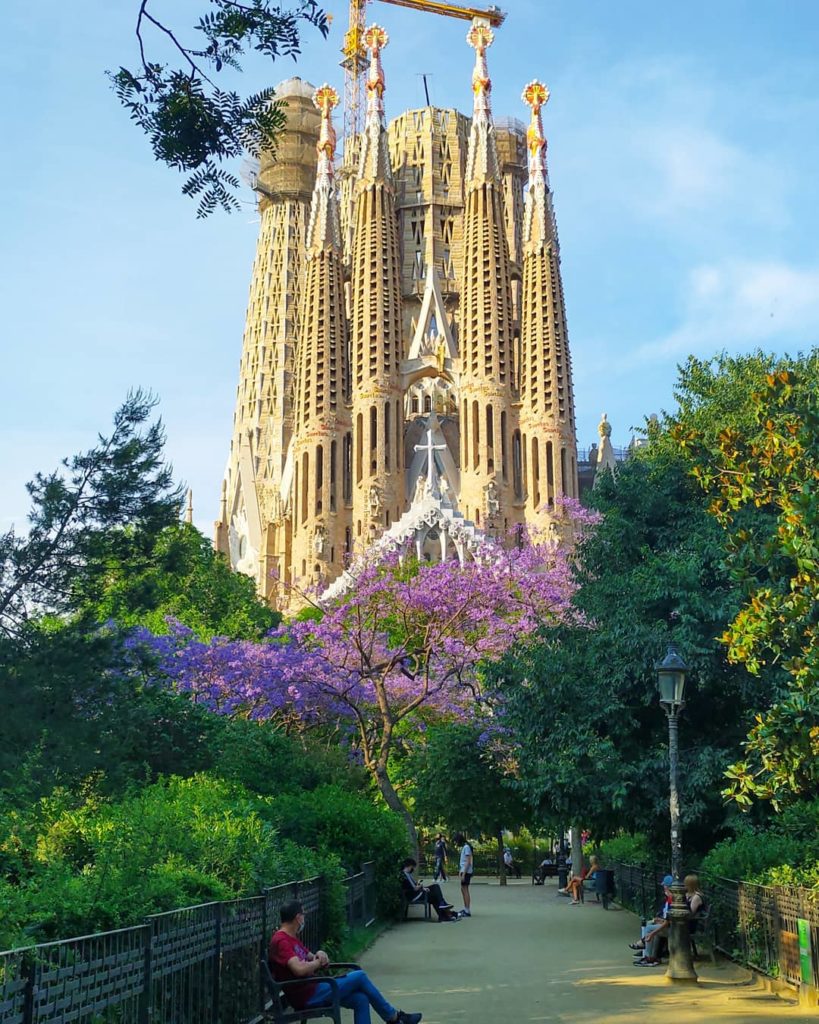

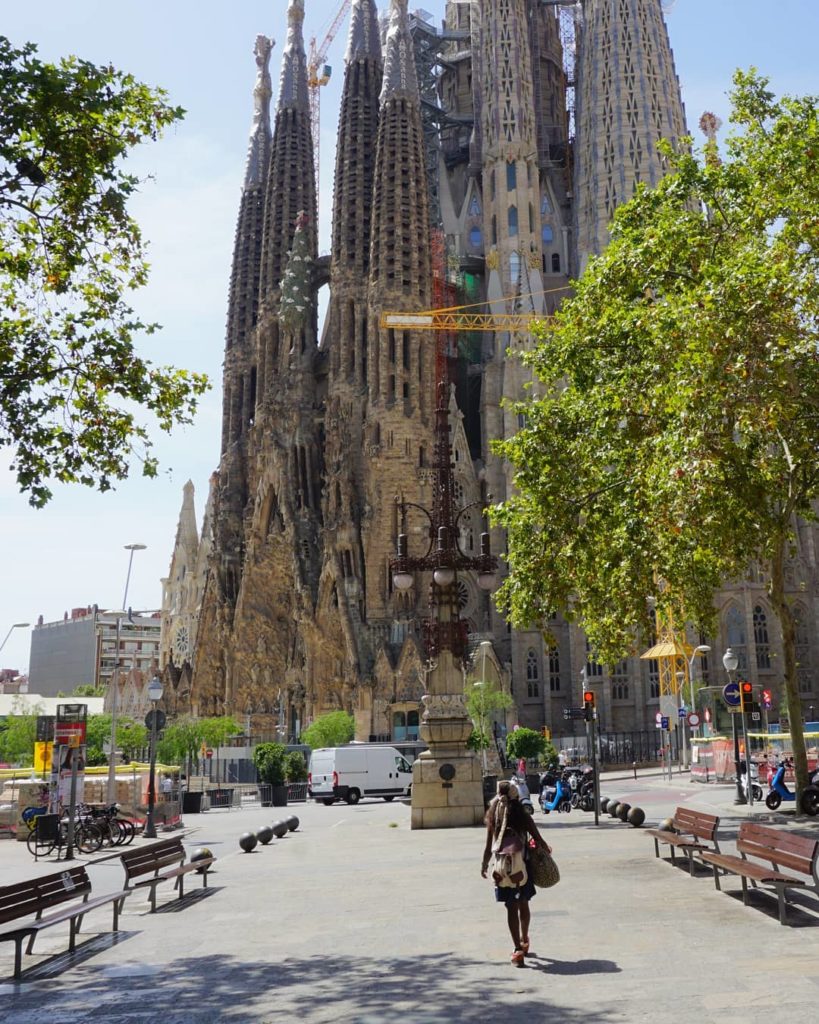
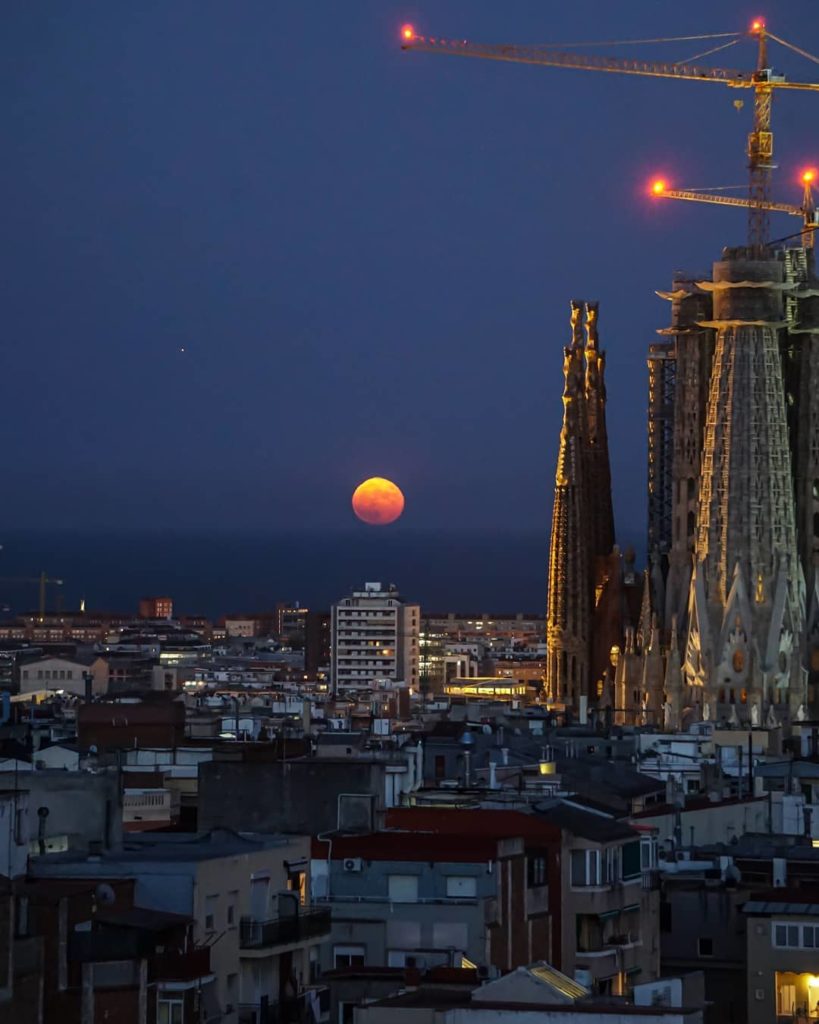

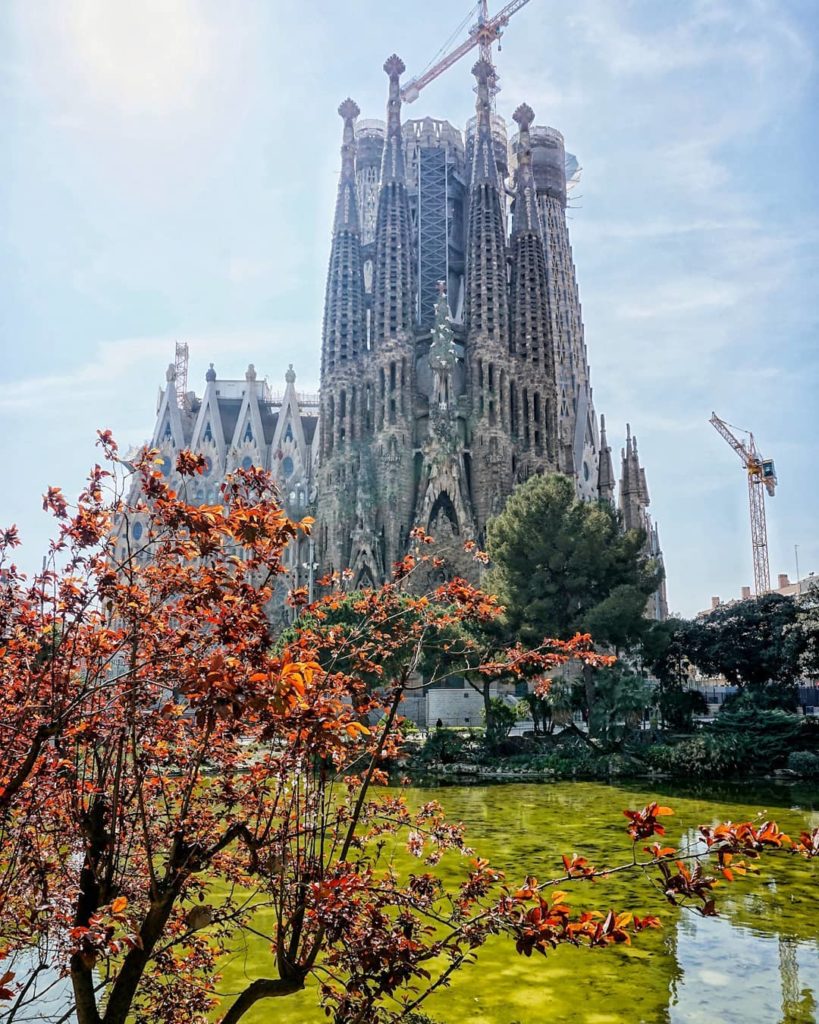

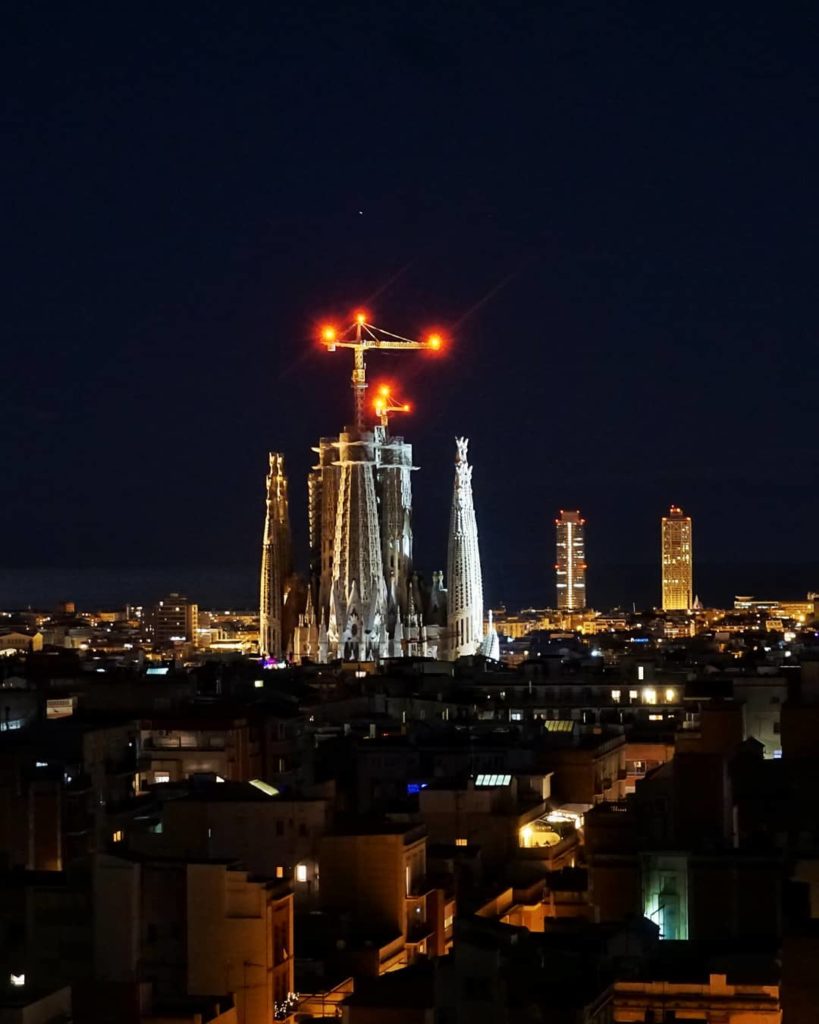
As I was digging into the urban history of Barcelona, I stumbled into one of the best kept and hidden secrets of the city. The secret is related to the Catalan equivalent of Santa Claus – Tió de Nadal, and to a popular figurine called El Caganer (the Crapper). The discovery changed the way I’m looking at the catalan Christmas.
So let’s start at the beginning… (reader discretion is advised)

During the early industrial era, more than 150 years ago, the trade of human excrements had become a big, organized and lucrative business in Barcelona. Shit was valuable, because local farmers used it as natural fertilizer to get better crops. In those days, human fecal waste was not generally used as a fertilizer, because it infected people with parasites. However, the Catalan society had found a way to prevent the infections. They learned how to organise effective quality controls of human waste and to use it to cultivate parasite free vegetables.
In Barcelona, until the late 19th century, people accumulated their body waste inside pits called ‘black holes’ located in their apartments. They also released their urine through the windows to the streets.
The trained professionals who evaluated and collected human excrements were Master Well Cleaners called ‘Poceros’. Traditionally these Masters went knocking from door to door and extracted the fecal waste from wells called ‘black holes’.
Instead of asking money for the cleaning job, they paid cash for the material collected, because the waste could be resold to local farmers with benefit. The price was fixed according to the quality and quantity of the material collected.
Before modern day chemistry, there existed only one way for the Poceros to check the real quality of the human waste. They poked the shit with a stick to check its consistency, and used their trained sense of taste as an advanced method or technique to control the quality.
The biggest marketplace of human waste in the world
In the summer of 1854, the government gave in to public pressure and allowed Barcelona’s city walls to be torn down. With the extra space for housing, the district of Eixample was born. Unlike the congested, epidemic-prone old town within the walls, the new city extension would become an efficient and livable place. Also, a new and complex sewage network was built, but not for all types of waste. The brand new sewer system evacuated only liquids from the houses and rainwater from the streets, but the human feces were stored inside the domestic wells like before.
The famous Plaça Catalunya in the city’s center was originally designed as a huge marketplace for human waste.
The ever-growing number of new citizens in Barcelona meant more clients for the fecal waste pickers and their contractors. As the fecal waste business was booming, the designer of the district of Eixample, Ildefons Cerdà i Sunier, calculated that the entire extension of Barcelona could be built with the help of the money earned from human excrements.
Income flushed down the drain
Unfortunately for some, the fecal waste business died little by little when the first cheap artificial fertilizers and ceramic toilets came on to the market. Also, the upcoming 1888 Barcelona Universal Exposition closed the waste Market at Plaça Catalunya. Nevertheless, many residents, especially the less fortunate ones, were protesting against this technological and industrial revolution.
Some protested because they had lost their respected profession and others because they had lost their ‘natural’ income. The ‘stingiest’ couldn’t understand why somebody would be willing to flush their precious material ‘down the drain’ and to spent money to buy a ceramic water closet.
On January 24th 1914, at Calle Plains number 7, a water closet exploded and three people were injured. (Source)
Finally, it took years for people to get accustomed to the water closet. During the first years, because of bad design and accumulation of methane, gas accidents caused many precious toilet seats to explode. Even at the beginning of the 20th century, the safety of toilets raised polemic and worries in Barcelona.
Human feces and Catalan Family Christmas traditions

If you visit Barcelona during the Christmas season, you’ll find nativity scenes in many shop windows, squares and churches. Inside these nativity scenes you can search for a popular figurine called El Caganer (the Crapper). The figurine is always hiding somewhere with his pants down and pooping. The typical figurine wears traditional Catalan clothes with a red cap (the barretina), like the master Pocero in the good old days…
Another tradition celebrating the long lost income of human waste business is called Tió de Nadal (sometimes called just Tió or Tronca). It is a mythical figure associated with the Catalan Christmas. Typically, it’s a piece of wood with two or four legs, a broadly smiling painted circular face, and a red cap. Tió de Nadal is traditionally brought home at the beginning of December. It is taken care of by the children. The children need to make sure that it won’t get hungry and cold. It is fed and put to sleep under a warm red blanket. Finally during the Christmas it’s beaten with a stick and told to ‘poo’ the Christmas presents out. At the same time the people sing the special Christmas carol composed just for this special occasion: “Caga Tio, if you don’t poop well, I’ll hit you with a stick”.
Here is a Christmas video made by Escola Vedruna de Palafrugell with Tió de Nadal. Merry Christmas!
There are lots of free or at least cheap activities to do in the city. A three-year old boy, who thinks he is 4, and his 2 to 6 years old friends tested and approved these tips.
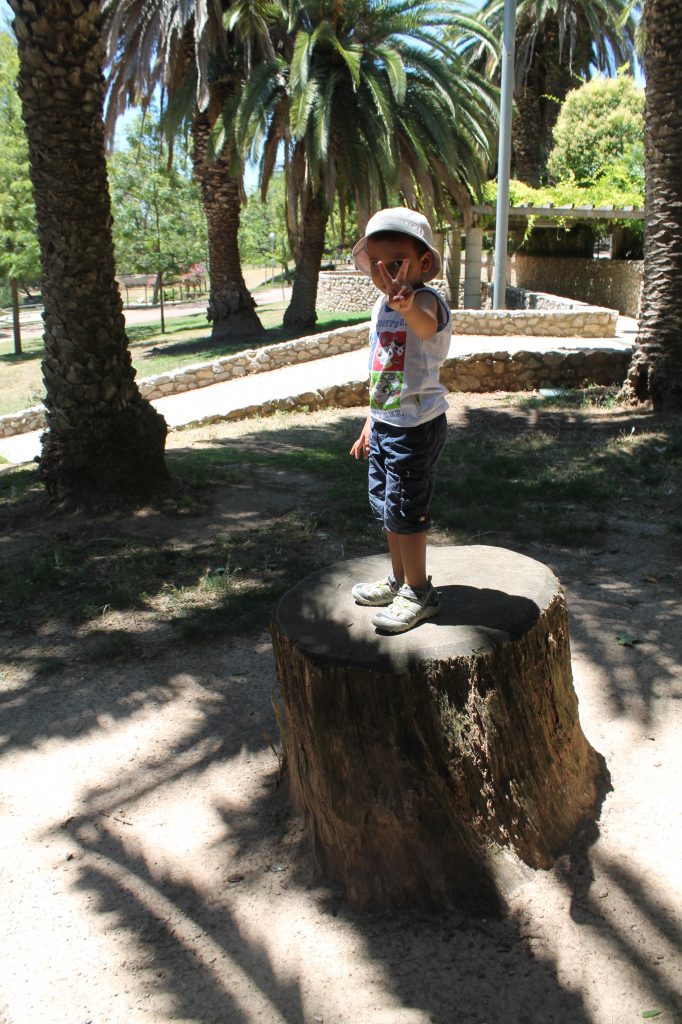
As a parent, occasionally you need to drag the kids out (and then back in, but that’s a completely different story). The Problem is that in a while, the parks close to your flat are getting boring for you and for your kids. We need some new experiences once in a while, don’t we!
Today we go to the Parc de Can Mercader in Cornella de Llobregat and visit the Club d’Amics del Ferrocarril, The Club of Friends of the Railway (sic).
The railway club was founded in 1976. Years later some of the club members visited miniature train tracks in other European cities and applied a permission to build one in Cornella. Later the club got money from the city council. The miniature railway opened for the public in 1987.
This “every-mans-treasure” is on the hills of Cornella and inside one of the most beautiful parks in Barcelona region. The park of Can Mercader is also one of the little known parks and just in a walking distance from the Cornella train station. If you choose to go there with metro, the easiest way is to take the blue line to the Gavarra metro station and walk down the hill to the park. The walk is easy even with a trolley. Don’t worry, the way to the park is nicely guided and you can’t miss it…The park is huge. Buses drive even closer to the front gate and near the impressive miniature trains.
When entering inside the park you’ll be walking by ancient palm trees, lakes, ducks, swans, tortoises and great spots for a picnic.
The train station is next to the museum of Museu Palau de Mercader (check the links below). It has more than 3,000 objects from the museum of the Count of Bell loc. Interesting, isn’t it? I stole that info from Wikipedia. But we are not going to the Museum, we’re (with) kids!
After walking through the beautiful park you reach the Can Mercader miniature train station. It is small and rustic but correct to their examples. The trains leave from here. The tickets are sold from a tiny booth in front of the station and the prices are quite reasonable – 1,5 € per passenger.
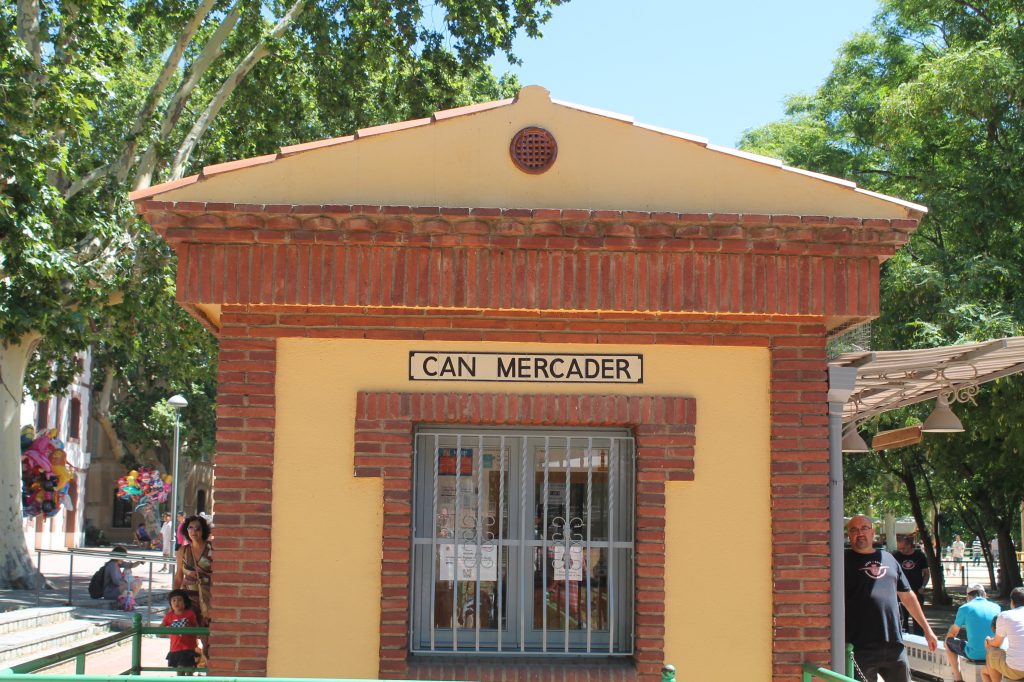
You shouldn’t be scared of the long queues. The queues move actually really fast. During the waiting time you get also some useful information about the Club and the possible happenings. Next you will step to the platform, and the conductor will lead you to your train and your seat. And here we go!
The tour takes seven to eight minutes, sometimes a bit longer if there are ducks on the railway tracks. First the train passes through a 6 meters long bridge. Than it heads to a playground, goes around it and dives in to a tunnel and 21 meters of darkness. After the tunnel it runs back to the bridge and around another part of the park. Finally the train returns to the station and is ready to take on the next passengers.
The attractions of the park don’t end here. There is a reasonable priced restaurant, racing track for radio controlled cars, swimming pools, sport center, huge playground and a vegetable market on every Sunday.
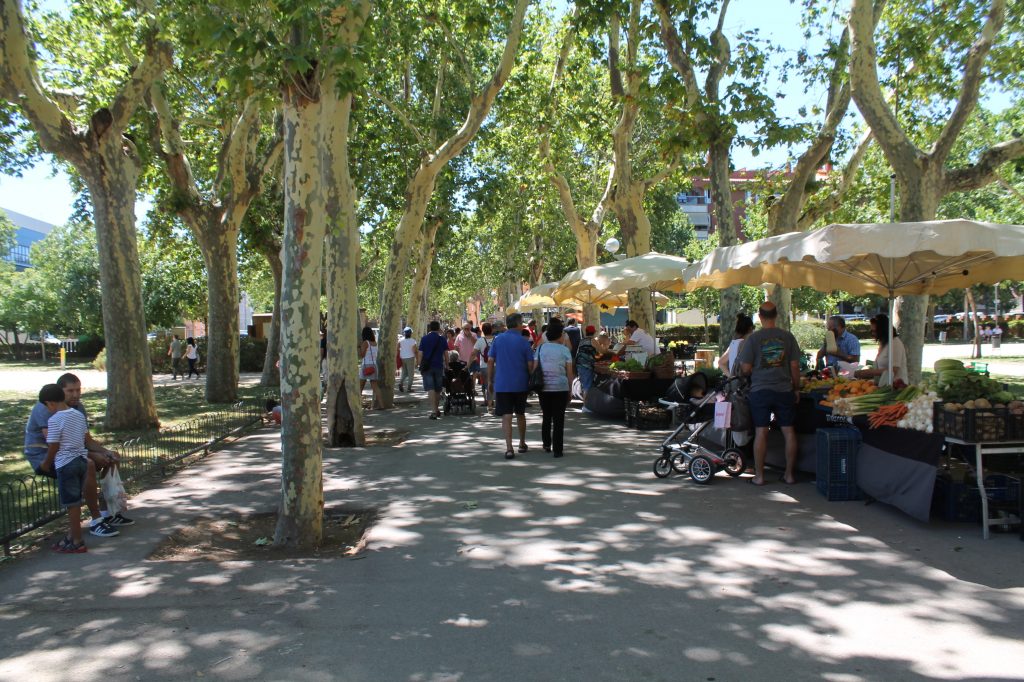
Ferrocarril De Can Mercader is open Sundays and public holidays from 11.15 to 13.30 except August and Christmas.
Address: Carretera De L’Hospitalet 08940
 Do you constantly forget or misplace important things? Do you walk around your flat every morning trying to find your wallet, cigarettes, lighter, keys etc.? Do you suffer from sudden memory loss? Does your family suffer from dementia or Alzheimer? If you do, there is a tasty and old medicine available.
Do you constantly forget or misplace important things? Do you walk around your flat every morning trying to find your wallet, cigarettes, lighter, keys etc.? Do you suffer from sudden memory loss? Does your family suffer from dementia or Alzheimer? If you do, there is a tasty and old medicine available.
 The Reading University biochemistry professor Jeremy Spencer claims that Champagne and Cava can help you to prevent future memory problems, dementia and even Alzheimer. The healthy antioxidant preventing memory loss is called phenolic acid and it is found especially in Champagne and in some varieties of Cava.
The Reading University biochemistry professor Jeremy Spencer claims that Champagne and Cava can help you to prevent future memory problems, dementia and even Alzheimer. The healthy antioxidant preventing memory loss is called phenolic acid and it is found especially in Champagne and in some varieties of Cava.
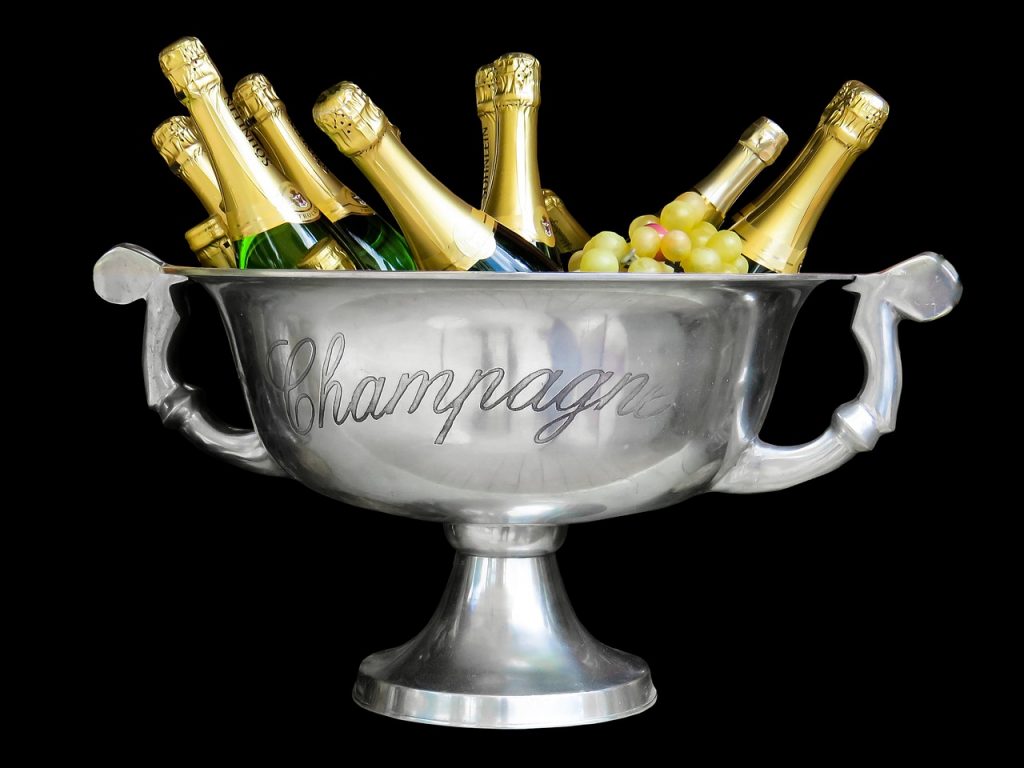 During the maze tests, a group of rats were taking Champagne daily during six weeks. The results were dramatic. The rats had 200% increase of proteins important for determining effective memory. Researchers also found that after champagne was consumed by rats, there was a significant boost to spatial memory – the ability to recognize surroundings that enables people to find their way home.
During the maze tests, a group of rats were taking Champagne daily during six weeks. The results were dramatic. The rats had 200% increase of proteins important for determining effective memory. Researchers also found that after champagne was consumed by rats, there was a significant boost to spatial memory – the ability to recognize surroundings that enables people to find their way home.
Professor Spencer is confident there would be a similar impact on the human brain. ‘Dementia probably starts in the 40s and goes on to the 80s. It is a gradual decline and so the earlier people take these beneficial compounds in champagne, the better.’
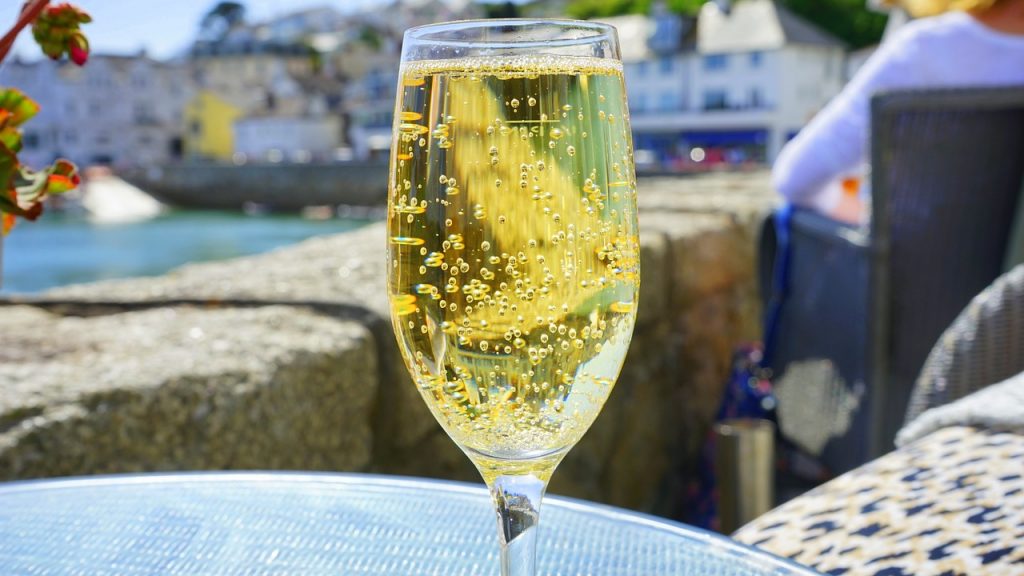 Professor Jeremy Spencer argues that you should enjoy at least one to three cava class a week, and start drinking before you reach 40 years of age if you want to start fighting against aging memory.
Professor Jeremy Spencer argues that you should enjoy at least one to three cava class a week, and start drinking before you reach 40 years of age if you want to start fighting against aging memory.
But, we should keep in mind that these studies were made in early-stage animal research. And we can’t be sure these results would apply to humans.
So, better late than never and start the day having breakfast served with a class of sparkling wine.
